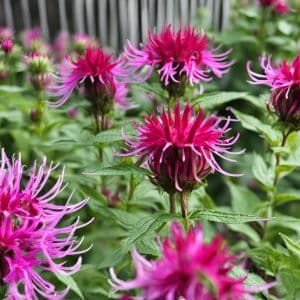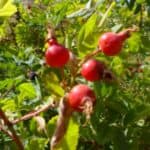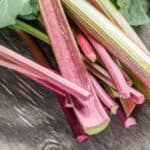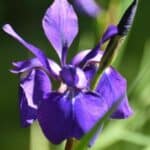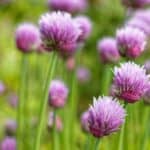If you want your bee balm to stay healthy and bloom beautifully year after year, knowing when to cut it back is key. The best time to cut back bee balm is in late autumn, after the top growth has died back, or in early spring before new growth starts. Timing your pruning right helps keep the plant bushy, prevents disease, and encourages more flowers.
This post may contain affiliate links.
Cutting back bee balm at the right time also helps keep your garden looking neat and invites more pollinators like bees and hummingbirds. Plus, trimming can stop mildew from spreading and makes sure your plant doesn’t get too leggy or overgrown. With the right care, your bee balm will be a vibrant highlight of your garden season after season.
Related Article: Bee Balm 101: The Pollinator Plant Every Garden Needs
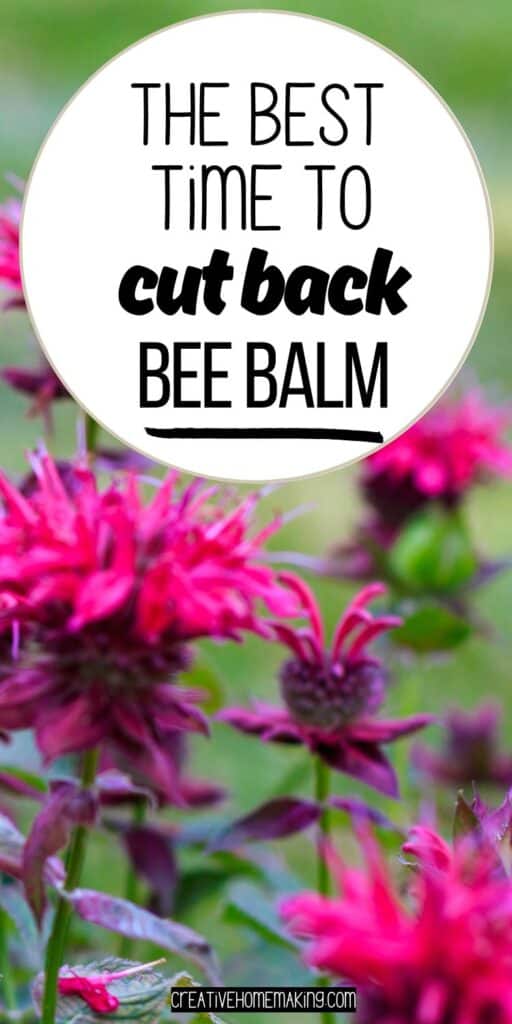
When to Cut Back Bee Balm
Cutting back bee balm at the right times helps keep your plant healthy and blooming longer. You’ll want to prune in certain seasons and look for clear signs that the plant is ready for trimming.
Related Article: How to Grow Joe Pye Weed to Attract Butterflies
Optimal Timing for Pruning Bee Balm
The best times to cut back bee balm are early spring and late fall. In early spring, prune before new growth starts. This clears dead stems and helps new shoots grow strong.
Late fall is another good time to cut back bee balm. After the flowers finish blooming, trim the plant once the top growth dies back. This gets the plant ready for winter and encourages bushy growth next year.
You can prune more than once during the growing season if needed. Light trimming helps control size and keeps the plant looking tidy. But avoid heavy pruning in summer to not interrupt blooming.
Related Article: How to Deadhead Bee Balm for Healthier, Longer Blooms
Seasonal Changes and Their Impact
Season changes affect bee balm’s growth cycle. In spring, the plant wakes up and pushes new growth. Cutting back old stems then gives room for fresh leaves and flowers.
In summer, bee balm grows quickly. You can lightly pinch back finished blooms to encourage more flowers. But avoid heavy cuts in the heat because the plant is actively growing.
In late fall, after frost or once the plant dies back naturally, cut bee balm down close to the ground. This protects the roots through winter and promotes healthy regrowth in spring.
Related Article: How to Harvest and Dry Bee Balm for Perfect Tea and Herbal Remedies
Recognizing Signs It’s Time to Trim
You’ll know it’s time to cut back when dead stems appear brown and brittle. Also, if the plant looks leggy or crowded, pruning can improve air flow and overall health.
After flowering, faded blooms signal you should trim old flower stalks. Removing these stops seed production and helps the plant focus energy on new growth.
If your bee balm stops blooming or the leaves look sickly, it may need a trim. Cutting back can revive the plant and encourage new buds to form.
Related Article: Top 5 Mistakes to Avoid While Growing Bee Balm for a Vibrant, Healthy Garden
Why the Timing Matters for Bee Balm Health
Cutting back your bee balm at the right time helps it grow strong and bloom well. It also keeps the plant healthy by reducing disease risks and supports pollinators longer each season. Knowing when to trim makes a big difference in your garden’s success.
Encouraging Abundant Blooms
If you cut back bee balm after its first bloom, you encourage the plant to produce more flowers. When old flowers are removed, the plant focuses energy on new growth instead of seed production. This helps extend the blooming period.
Trimming regularly also prevents bee balm from becoming too leggy. Healthy, bushy plants have more flower buds and look fuller in your garden. Timing your cuts shortly after blooming is best to get the most out of your flowers.
Related Article: The Best Companion Plants for Bee Balm
Preventing Disease and Pests
Leaving old foliage on bee balm during fall and winter can invite diseases like powdery mildew and pests that damage the plant. Cutting back bee balm before cold weather helps prevent this problem.
Removing stems and leaves after the growing season stops bugs and fungi from hiding in the dead plant material. Cleaning your pruning tools before cutting also keeps your bee balm safe from spreading infections.
Supporting Pollinators Throughout the Seasons
Bee balm attracts butterflies, bees, and hummingbirds when it flowers. Deadheading spent blooms early lets the plant produce more flowers for these pollinators to enjoy.
By timing your cutbacks right, you keep a steady supply of nectar coming. This helps pollinators find food during different times of the growing season, supporting your local ecosystem and making your garden lively and colorful longer.
Follow my Bee Balm board on Pinterest.
